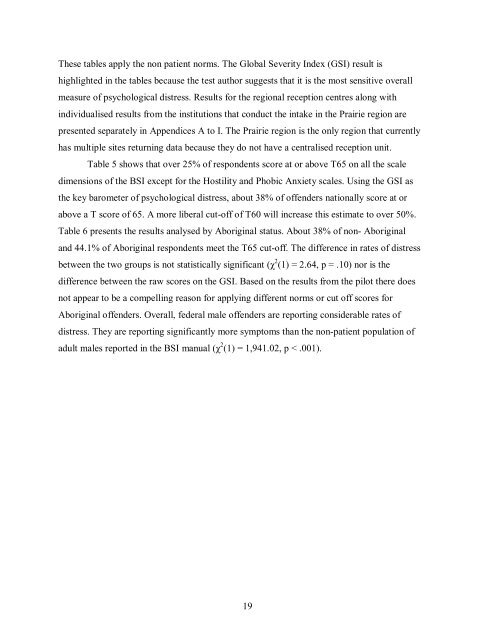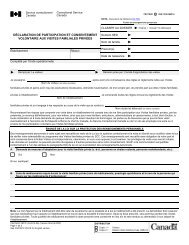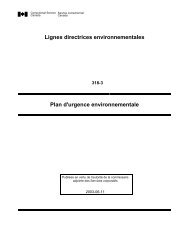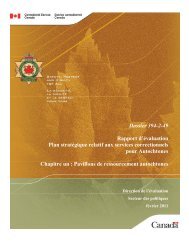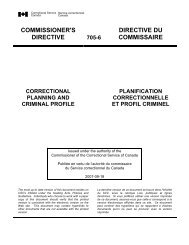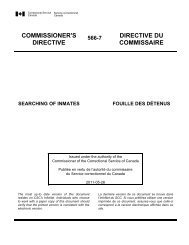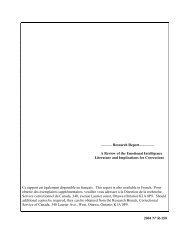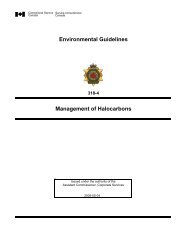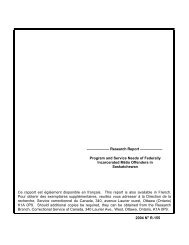The Brief Symptom Inventory (BSI) - Service correctionnel du Canada
The Brief Symptom Inventory (BSI) - Service correctionnel du Canada
The Brief Symptom Inventory (BSI) - Service correctionnel du Canada
You also want an ePaper? Increase the reach of your titles
YUMPU automatically turns print PDFs into web optimized ePapers that Google loves.
<strong>The</strong>se tables apply the non patient norms. <strong>The</strong> Global Severity Index (GSI) result is<br />
highlighted in the tables because the test author suggests that it is the most sensitive overall<br />
measure of psychological distress. Results for the regional reception centres along with<br />
indivi<strong>du</strong>alised results from the institutions that con<strong>du</strong>ct the intake in the Prairie region are<br />
presented separately in Appendices A to I. <strong>The</strong> Prairie region is the only region that currently<br />
has multiple sites returning data because they do not have a centralised reception unit.<br />
Table 5 shows that over 25% of respondents score at or above T65 on all the scale<br />
dimensions of the <strong>BSI</strong> except for the Hostility and Phobic Anxiety scales. Using the GSI as<br />
the key barometer of psychological distress, about 38% of offenders nationally score at or<br />
above a T score of 65. A more liberal cut-off of T60 will increase this estimate to over 50%.<br />
Table 6 presents the results analysed by Aboriginal status. About 38% of non- Aboriginal<br />
and 44.1% of Aboriginal respondents meet the T65 cut-off. <strong>The</strong> difference in rates of distress<br />
between the two groups is not statistically significant (χ 2 (1) = 2.64, p = .10) nor is the<br />
difference between the raw scores on the GSI. Based on the results from the pilot there does<br />
not appear to be a compelling reason for applying different norms or cut off scores for<br />
Aboriginal offenders. Overall, federal male offenders are reporting considerable rates of<br />
distress. <strong>The</strong>y are reporting significantly more symptoms than the non-patient population of<br />
a<strong>du</strong>lt males reported in the <strong>BSI</strong> manual (χ 2 (1) = 1,941.02, p < .001).<br />
19


